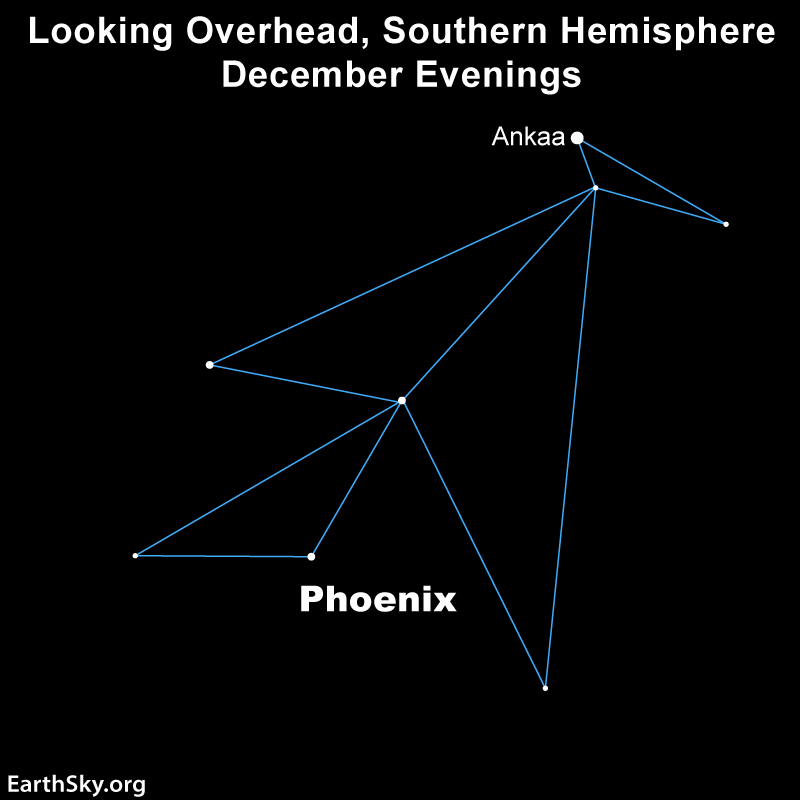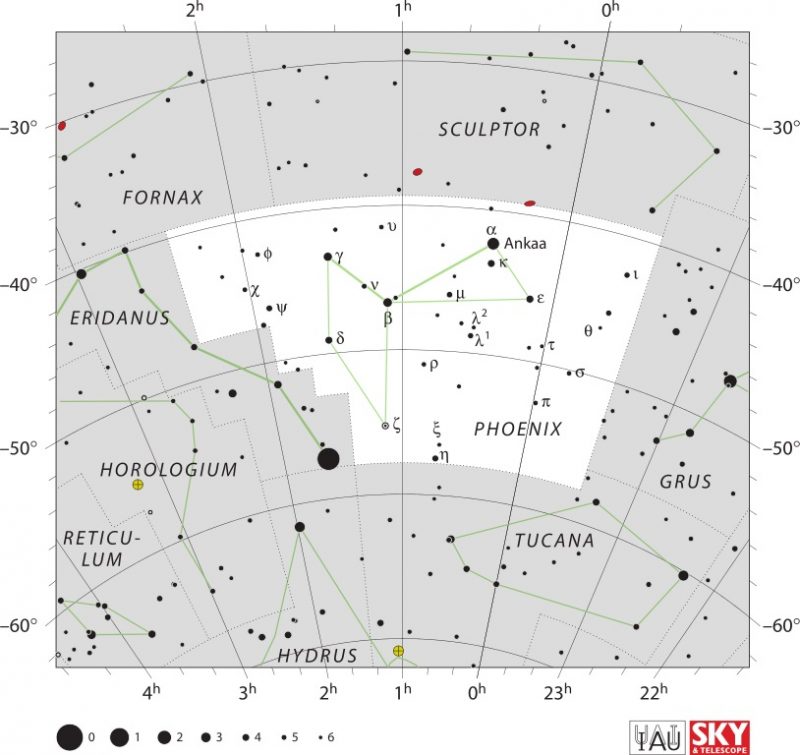
The Southern Hemisphere holds a number of constellations named for birds. These “Southern Birds” include Phoenix, Grus the Crane, Pavo the Peacock and Tucana the Toucan. Phoenix, particularly, is the only one named for a mythological bird.
Phoenix nestles into the big nest of Southern Birds with Grus to the west and Tucana to the south. Therefore, to see Phoenix, you’ll want to be located in the Southern Hemisphere and looking up on a December evening as it passes close to overhead.
Furthermore, Phoenix has a well-known mythology of a bird that rises from its own ashes. And in addition, Phoenix the constellation lies adjacent to the constellation representing a furnace: Fornax. Fornax is to the northeast of Phoenix.
How to find the constellation Phoenix
The first step to locating Phoenix is to spot the bright stars Achernar. Achernar, notably, marks the far southern end of the constellation of Eridanus the River. In addition, the area of sky south of Achernar belongs to Hydrus the Lesser Water Snake and Phoenix.
Ankaa is its brightest star
The brightest star in the constellation Phoenix is Ankaa, or Alpha Phoenicis, at magnitude 2.4. Ankaa means the boat in Arabic. Ankaa lies approximately 77 light-years away.
East of Ankaa are three stars that form a triangular shape. The closest to Ankaa is Beta Phoenicis at magnitude 3.3. Then, the next brightest point in the triangle is magnitude 3.4 Gamma Phoenicis. Lastly is magnitude 3.9 Delta Phoenicis.
So far, astronomers have found 10 stars in Phoenix that have planets.
Likewise, Phoenix also contains one of the oldest stars yet discovered. Scientists know it’s an old star because it has very little metal, which means it must have been one of the earlier generations of stars. Indeed, they estimate the star to be about 13 billion years old, forming early in the history of the universe. It lies 36,000 light-years away.

Bottom line: The constellation Phoenix lies in Southern Hemisphere skies and contains one of the oldest stars yet found.











